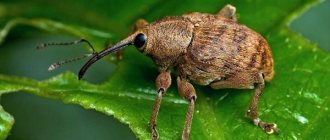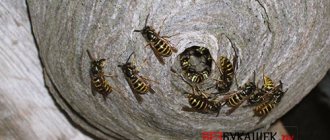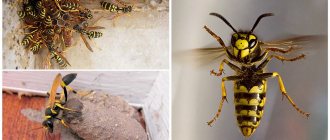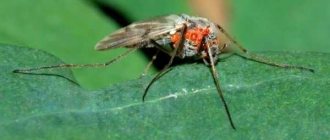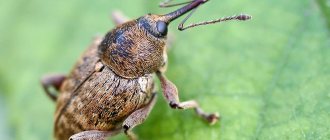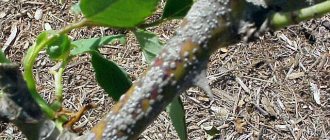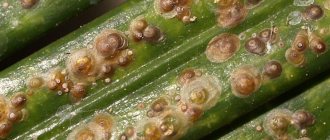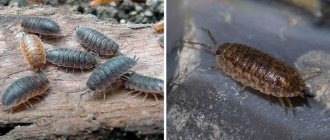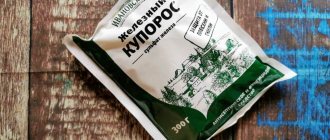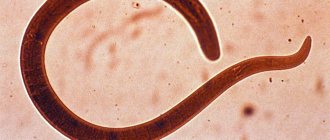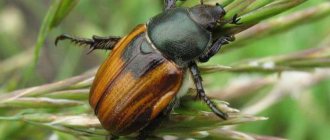Those wishing to feast on the fruits of man's labor appeared on the same day when man first stocked up on food. It is known that Ancient Rome and Egypt suffered from an invasion of granary beetles that spoiled grain reserves. Centuries have passed, but humanity still cannot get rid of such a parasite as the common barn weevil. To immediately recognize the parasite in a product, you should study its description and characteristics. And in order to understand how to combat it more effectively, it is necessary to find out methods of reproduction, preferred conditions and other information.
Granary weevil: description
Characterized by its small size (about 4 mm), the pest bug is distinguished by its dark brown, almost black color, narrow long body and the presence of wings. Such an insect is not adapted to flight, which does not prevent it from successfully moving over considerable distances with the help of humans. The granary weevil travels from continent to continent on ships carrying industrial grain shipments, and by land on trains and automobiles. How to get rid of such a dangerous insect?
The process of reproduction of such insects occurs during the warm period: the female, using a thin proboscis, gnaws a small hole in each grain (there are two in a corn grain), lays an egg in it, and then seals the crack with a stopper made of flour. This trick makes damaged grains practically indistinguishable from whole grains. You can spot the “trick” if you throw a handful of grains into the water: damaged (infested) specimens will float to the surface, while intact ones will sink to the bottom. Upon visual inspection, you can see that grains with larvae are an order of magnitude duller in color than undamaged ones.
Development
Imago. The female usually gnaws a shallow hole in the grain near the embryo, at the bottom of which one egg is placed. The fertility of a female weevil is about 200-250 testicles.
Egg. To protect it from drying out and predators, the laid egg is covered with mucus, which quickly hardens in air.
Larva. A few days later, a legless white larva emerges from the egg, shortened, with a strongly convex back and a brown head. Immediately after hatching from the egg, the larva bites into the grain, where it spends its entire life, eating away almost all of its contents. In feeding areas, larvae that have completed development form a cradle, in which they transform into a pupa, shaped like an adult beetle.
Doll. The development of the pupa lasts 7-22 days (depending on air temperature).
Imago. The beetles of the new generation, after the outer cover has hardened, after 2-6 days, gnaw a round hole in the grain shell and go outside. They feed by gnawing out the softest parts of the grain, thereby spoiling a significant amount of grain during the entire period of their life. The beetle avoids illuminated places. At the slightest shock, it falls into a stupor, pressing its antennae and legs tightly to its body. [6]
Abiotic factors. Optimal conditions for the development of weevils in grain are grain moisture of 14 -16%, air humidity of 75 - 95% and a temperature of about 25 °C. The duration of pest development from egg laying to adulthood depends on temperature and humidity. Thus, at 17 °C development lasts about 80 days, at 20 °C - 70 days, at 25 °C - 34 days and at 28 °C - 1 month.
We suggest you read: Flea and tick collar for dogs
The lifespan of a beetle is very significant. At room temperature and the presence of food, a beetle can live for more than a year (at a temperature of 10-12 ° C - 28 months).[1] At a temperature of (5-10)°C, beetles stop feeding, and at 3°C they fall into cold torpor; at temperatures below 0 °C, weevils gradually die.[6]
Lack of moisture inhibits the development of the weevil, and a humidity of 11% is detrimental to it.
In the southern regions, in the conditions of granaries, the granary weevil can produce 2-3 generations during the year, and in the central regions - 1-2. Beetles, larvae and pupae overwinter inside grains. Beetles can also overwinter in crevices and cracks in floors, walls, crawl spaces and other similar places. [5]
Distributed with all types of damaged products. Especially often with warehouse equipment, grain cleaning machines that have not been cleared of old grain residues, and have not been destroyed with sweeps and unusable grain waste.[6]
Characteristic
The granary weevil is also called the grain weevil. This is an insect whose body does not exceed 5 mm. The size of the bug depends on the food it consumed during its development. The body shape resembles a slightly narrowed cylinder, the surface is shiny. The color of a broadmouth depends on its age. Thus, young individuals are colored light brown, while adults are almost black in color.
Barn weevil
The head of the weevil is very small, extended forward into a rostrum, at the end of which there is a mouthparts with which the grain weevil gnaws its food. The antennae located on the head are curved. The insect has wings: elytra with deep longitudinal grooves, membranous wings.
Interesting!
Despite the fact that the granary weevil is “equipped” with wings, it moves only with the help of its legs, since the development of the wings does not allow them to be used for these purposes.
Maliciousness
The common beet weevil greatly damages plantings and seed plants of various types of beets. The beetles damage the seedlings, leaving a “stump”. They are usually dangerous during the period of seedling development before the growth of the second to fourth pair of leaves. In addition to chenopods, beetles feed on species from the families of amaranthaceae, purslanaceae and others. Damage to oak and maple seedlings in forest nurseries has been observed.
The larvae damage plant roots. If severe damage occurs, young plants die and thinning of crops occurs. Developed beet plants turn yellow, wither, and die in the absence of moisture. Damaged testes dry out prematurely.
The main areas of harmfulness of this type are located within Ukraine and the adjacent regions of Moldova and Russia. In this area, pest control must be carried out systematically. In the rest of the range it is harmful in places.
Life cycle of the granary weevil
The fertility of one individual is 150-300 eggs with a life cycle of 3-4 months; males live a little longer, about 5 months. The duration of development of the larva (about 3 mm long, white, with a brown head) depends on temperature and humidity and is 3-6 weeks. One can only imagine how many thousands of pests just one pair of beetles can produce over the course of a year. At a temperature of +4°C, the larvae stop developing; at –5°C, they die. Upon completion of development, they turn into almost transparent, 3-5 mm long pupae. After 7 - 22 days, the formed beetles of the new generation gnaw a passage in the shell and leave the shelter outside. The average lifespan of an adult specimen is about 2 years. During the day, one larva destroys 0.08-0.67 mg of grain, gnawing out its internal contents; Accordingly, a massive number of these insects can destroy a significant amount of stocks.
What is a pest?
At home you can find several varieties of weevils; in total there are several thousand species. All of them are united by one external feature, which gave the name to the species - the presence of a long trunk-type tube on the head.
By the way, the second name for insects of this species is elephants.
Types of domestic weevils:
- The barn weevil is a beetle 3-4 mm long, dark in color, very voracious. Found in stores of flour, cereals, pasta, and snacks.
- The rice elephant prefers cereals, cereals, flour products and ready-made baked goods. Size 2.5-3.5 mm, color brown. The female pushes the egg inside the grain and seals the hole with excrement. The larva gradually eats away the pulp.
- The nut weevil is most often found in hazelnut kernels, but can also feed on other nuts. Light, gray-brown in color, up to 1 cm long.
- The acorn fruiter is rare at home and can feed on any nuts and beans.
- The beet weevil is also rarely found in the apartment. Size 1.5 mm, color gray-black. When it gets into an apartment, it can move into pots with house flowers and lay eggs in the roots.
The larvae of weevils living in the house look monotonous. Whitish body with a small number of bristles, brown leathery head. The average size is 3 mm. The larvae are incredibly voracious, eating three times more than adult insects. The emergence of new generations of pests in the warm and humid environment of the kitchen occurs continuously.
A small and distant bug
The insect got its name due to the unusual shape of its head. Its front part resembles an elongated proboscis. With its help, the bug destroys the dense skin of grain or cereal.
In the natural environment, there are many species of weevils that destroy:
- grain crops;
- peas;
- buckwheat;
- rice;
- corn.
Therefore, the question of how to combat the grain weevil is being decided at the state level. Otherwise, the country may lose the harvest and famine will occur.
The beetle belongs to the Coleoptera family. Its maximum size is approximately 4 mm. The weevil is dark brown in color. Doesn't fly. The active life cycle of an adult lasts approximately 2 years. The female produces 3 or 4 generations per year. She lays eggs inside the grain, where they go through all stages of development.
In order for the individuals to come out, the adult beetles gnaw a hole in the grain.
She can lay approximately 300 eggs per season, which can damage a large amount of grain. Mass reproduction of pests leads to an increase in the temperature of the stored crop. The pest overwinters inside the grain or in various crevices of the room.
Signs of defeat
The presence of the weevil beetle in a garden plot in most cases goes unnoticed for a long time. Pests become visible when the buds fall off, and not always.
It is worth remembering that a few individuals will not cause much harm to strawberries. Therefore, when you see one beetle, you need to destroy it, but do not panic. However, when a whole colony of them forms, action should be taken quickly. But the fact is that the appearance of a large number of pests means that the strawberries were poorly cared for. After all, beetles cannot fly from afar. Most likely, the gardener did not notice their appearance for a long time. They, feeling at ease, managed to reproduce.
Beetles can crawl or fly from a neighboring area. They feed and hibernate near those places where the larvae can be laid. You can see weevils in early autumn or spring
This is when you should pay special attention to the following signs:
- Barely noticeable holes on strawberry leaves. Such damage is left by the proboscis of weevils. If there are no beetles, or there are few of them, then the traces will not be noticeable. But when almost the entire surface of the leaves looks damaged, it is worth carefully examining the strawberry bushes to begin to fight the uninvited guests.
- The presence of withered buds, gnawed stalks. When there are a lot of them, it is not difficult to determine that there is a pest here.
- The edges of the leaves show signs of damage, as if someone was eating them. Most likely, this is exactly what the elephant’s vital signs look like.
Destruction of beetles in kitchen supplies
How to deal with such a dangerous pest as the barn weevil? How to get rid of such a small but harmful insect in the barn and kitchen? In terms of household supplies, if a weevil is found in cereals, you should not eat the latter, because the secretions of insects and larvae contain carcinogens. Infected products must be thrown away, and a tough and possibly lengthy fight must be waged against the weevil.
It is recommended to store cereals in jars or hermetically sealed containers - not in bags, which the granary weevil (photo above) can easily gnaw through with its sharp teeth. Barn weevils are heat-loving creatures and die at low temperatures. Therefore, as one of the ways to get rid of bugs, you can use cold: place products that serve as potential food for weevils in the freezer. High temperatures also have a devastating effect on the tiny resident. Thus, at +40°C the granary weevil dies within 2 days, at +50°C – after 6 hours. After processing, food supplies should be placed in sealed containers with tight lids that are impenetrable to insects.
Why is it dangerous?
Weevils can reproduce very quickly in comfortable home conditions. One female can lay up to 300 eggs during her life. Their colonies spread throughout all bulk products in the kitchen. Weevil pests pierce containers with groceries with their “proboscis” and poison food with their excrement. Insect waste products can cause allergic reactions and eating disorders.
Important! Weevils are carriers of fungal and bacterial infections.
It is extremely difficult to notice the first stage of infection. You may find small stuck together lumps in the flour. In buckwheat, peas, and beans, whitish pellets are visible, indicating the presence of pests.
Rice elephant
Advantages and disadvantages
The weevil is a creature extremely adapted to changing environmental conditions.
It feels comfortable in a temperature range of 16 to 28 degrees, but can tolerate more extreme temperatures. It is also not demanding of environmental humidity, since it spends most of its life inside the grain under the protection of its dense shell - exine. However, too dry air is destructive for most insects, including the weevil.
The duration of the beetle's life cycle depends on external conditions: the milder they are, the faster the insect reaches sexual maturity. If the temperature regime does not suit it, then the pest is able to fall into suspended animation and then return to a full life. Thus, the pest is capable of producing 2–3 generations during the year. Both beetles and larvae overwinter inside the grains. Also, adult insects feel good in crevices, cracks and other secluded places.
Read also: How to smoke lard: ways to smoke it correctly, recipes for smoked lard, benefits and harms
Together with damaged grain, as well as equipment, weevils migrate from one storage facility to another, damaging agricultural products.
Since man is forced to tolerate the presence of the weevil in his barns, he has developed a strategy to combat this pest. For prevention, the following means of control are used:
- cooling or, conversely, warming up grain and its processed products before storage;
- drying it out, because insects are critical to environmental humidity;
- cleaning grain from debris and impurities;
- cleaning of storage facilities and treatment by disinfestation. For this purpose, preparations based on hydrogen phosphorous (phosphine) are used, which are sprayed or used in the form of an aqueous solution;
- the use of ionizing radiation is at the development stage and may be used in the future.
The weevil grows not only in barns, but also in our homes. To prevent the beetle from spoiling our supplies, there are proven and harmless methods:
- place the cereal in the freezer for a while, and then pour it into sealed containers;
- since the insect does not tolerate strong odors, you can add peeled garlic cloves, bay leaves or lavender sprigs to the cereal;
- The cabinets where you store supplies must be washed with soap, soda or vinegar solution and ventilated well.
And finally, you shouldn’t stock up on cereals and pasta for half your life: fighting the harmful bug can become too long and exhausting at home.
Description of the main types of ticks
Ixodid ticks
The body of adult individuals is covered with hard chitinous plates and is quite impressive in size - ticks of this species often reach 2.5 centimeters in length. Ixodid ticks live in latitudes with temperate climates, found in the foliage of trees and various shrubs throughout the entire Eurasian continent. This type of tick “happy” parasitizes forest and domestic animals, cattle, and does not disdain humans: having attached itself to the skin of its victim, it is ready to feed on blood from several days to 2-3 weeks. The female ixodid tick is very fertile and is capable of laying 17 thousand eggs per season.
Argasid mites
They live in the cracks of houses and outbuildings, often living in abandoned bird nests. They parasitize domestic animals and poultry; they give particular preference to chicken coops; they often attack humans. A tick bite is quite painful, followed by severe itching and a profuse rash at the site of the lesion. The parasite has soft, leathery coverings, and its head is significantly recessed into the inside of the body, making it barely noticeable.
Armored mites
They mainly live on the soil, although there are also species that prefer to live in trees. As such, oribatid mites do not have parasitism: their food is living plants, mushrooms, lichens and their plant remains; they do not disdain carrion. However, the oribatid tick poses a danger to animals and birds, as it is a carrier of helminths, in particular tapeworms.
Gamasid mite
It chooses bird nests, chicken coops and rodent burrows - mice and rats - as its place of residence, because it parasitizes their owners. The lifespan of this small mite (dimensions do not exceed 1 mm) is approximately 6-7 months, but even in such a short period of time it causes great damage to poultry farms, causing feather loss in chickens and huge scratches on the skin with its toxic saliva.
Subcutaneous mite
It parasitizes animals and humans, living on their bodies for several years and feeding on dead skin cells, causing unbearable itching and irritation in its “host”. The female subcutaneous tick lives for 2.5 - 3 months, laying up to 80-120 eggs during this time, from which viable nymphs appear within a couple of days.
Scabies mite
A parasite that causes an unpleasant and sometimes difficult-to-treat disease - scabies. It causes a lot of trouble for both animals and humans, making tiny passages in their skin, feeding on skin secretions and causing severe itching and redness. The lifespan of this mite varies from 1 to 1.5 months, but within a given period the female manages to lay eggs repeatedly.
Ear mite
The main “breadwinners” of this parasite are cats and dogs. It is safe for humans, but it gives animals a lot of unpleasant sensations in the form of scratching of the ears with subsequent inflammation.
Dust mite (bed, linen)
It does not parasitize living organisms, as it feeds on exfoliated epidermis, accumulations of dust, fluff or feathers. It is one of the causes of asthma in humans. This type of tick is quite prolific: in four months of life, the female lays about 350 hundred eggs.
Spider mite
It is absolutely harmless to birds, animals and humans, since it is a complete “vegetarian” and feeds on plant juices, settling on the bottom of the leaf and sucking the juices out of it. It is a carrier of gray rot, which is destructive for plants.
Water (sea) mite
It lives in standing or flowing reservoirs of fresh water, and some specimens prefer the salty sea element. This type of mite parasitizes aquatic insects and mollusks.
Predatory mite
It feeds on its relatives, so sometimes it is specially introduced by humans into greenhouses and hothouse farms to combat spider mites.
Granary (flour, bread) mite
For humans, in principle, it is safe, but for grain or flour stocks it is a serious pest: the products become clogged with waste from the flour mite, which leads to its rotting and mold formation.
Pasture mite
It lives in the southern part of Russia, Kazakhstan, Transcaucasia, the mountains of Central Asia, and the south of Western Siberia. Mainly settles in forest-steppes or forests. Dangerous for animals and humans, it can be a carrier of encephalitis, plague, brucellosis, and fever.
Brown dog tick
Not dangerous to humans, but dangerous to dogs. Lives everywhere. Particularly active in coastal areas and on the Black Sea coast.
Barn weevil: control measures
In warehouses, it is very difficult to get rid of the barn weevil, because the insect hides in hard-to-reach places, and being inside the grains, it is practically invulnerable and can destroy from 10 to 30% of the harvested grain.
The fight against granary weevil consists of the following measures:
- Strong cooling of grain (down to -10°C), which can be used both for preventive purposes and in the process of destroying existing pests. Cooling is carried out in dry weather using ventilation and ventilation. This requires mandatory humidity control.
- You can partially get rid of the barn weevil by removing it on sieves with holes or using aspiration preparations. Any movement of the grain mass has a negative impact on the condition of harmful insects, reducing their numbers and development.
How to deal with grain weevil: wise advice from experts
Due to the fact that people have to endure the annoying bug in their storage units, they have come up with various options to combat it.
Preventive measures have a special effect:
- cleaning the crop from all kinds of impurities and debris;
- warming up;
- cooling the grain before sending it to storage at a temperature;
- maximum drying of the product;
- thorough cleaning of the premises;
- disinfection of storage with special preparations.
If the barn is small, beetles are driven away with the help of fragrant plants. It could be lavender, garlic or regular bay leaf. Let's take a closer look at how to deal with grain weevils in order to preserve the crop until the next season.
Periodic movement of grain into storage has a detrimental effect on the development of pest larvae.
Cleanliness is a reliable protector against pests
Before putting grain into storage, it must be thoroughly cleaned of debris. A small amount of the crop is carefully inspected, removing weeds and large husks. A large volume of grain is cleaned mechanically. Thanks to this treatment, the chance to protect the product from beetle invasion increases.
An important control measure for granary weevil is humidity control and ventilation of the granary. It should always be dry and have enough fresh air. If necessary, the room is treated with chemicals.
The following options are available for sale:
Most often, hydrogen phosphide is used, which is sprayed throughout the storage area. For small spaces, the drug is used in liquid form.
If grain is stored in containers, they also need to be disinfected and cleared of debris.
"Ambulance" tablets
To protect the crop from annoying pests, scientists have created a special drug. Practice has shown that tablets against weevils in grain are an effective means of combating the pest. However, before using them, you must carefully read the instructions for use.
If grain is poured into a hopper, tablets are added as it moves quickly and quite sharply. To ensure protection of the product stored in bags, the drug is placed around them in small portions.
Chemical methods of controlling weevils
One of the effective methods of getting rid of barn weevil is chemical disinfection of grain - a radical measure consisting of aerosol or gas treatment. Aerosol disinfection is carried out using the drugs “Aktellik”, “Karate”, “Fufanon”, “Arrivo”. This treatment, the advantage of which is the high effectiveness of the drug, is carried out by special organizations. The disadvantages of this method include the long period of time before permission to sell grain.
Gas disinfection is carried out with such drugs as Foskom, Alfos, Phostoxin, Magtoxin. The room must first be carefully sealed, and fumigation must be carried out with the involvement of specialized organizations.
Ways to get rid of weevils
The weevil can enter an apartment along with a package of flour or grain, which was stored in warehouses for a long time and then went on sale. If at least one beetle is accidentally discovered in the kitchen, there is already a whole colony of them somewhere and you need to urgently decide how to get rid of the pests. You need to start fighting the beetle immediately, before it destroys all supplies.
The granary weevil is one of the most dangerous pests of grain stocks
The fight against weevils is carried out according to a simple scheme of actions:
- It is necessary to check all stocks of bulk products - cereals, pasta, flour, tea, coffee, cocoa, spices, etc. Products that have been heavily infested should be thrown away without regret, since the secretions of these beetles and their larvae can cause serious harm to human health .
- Grains and products in which the weevil was not found, and all recently purchased ones, should be placed in the freezer for several days. Cold effectively helps fight weevils. These insects are heat-loving; at +5°C they fall into torpor, and at -5°C the beetles and larvae die within a few days.
- Another means of combating weevils is heat. This beetle can withstand temperatures of +40°C for no more than two days, and at higher temperatures it dies in a few hours. Products that require preventive heating are placed in the oven and kept there at a temperature of 50-60°C for 6 hours. This will get rid of the beetles and their larvae.
- After treatment with cold or heat, the products must be poured into hermetically sealed glass or plastic containers into which the pest cannot penetrate.
- Garlic is often used as a folk remedy to repel weevils. A few cloves are placed in each container of cereals or pasta. It is important that the garlic cloves are well peeled, but the pulp is not damaged - damaged cloves quickly give off their smell to the grain and rot themselves. The same thing happens if you cut the garlic cloves into slices. An intact clove retains its repellent odor for a long time and does not rot.
- For preventive purposes, all furniture where food is stored is thoroughly cleaned from time to time using a soap solution, and then washed off with water to which a little vinegar is added. After cleaning, the furniture is dried and ventilated.
- To repel insects, strong-smelling lavender flowers and bay leaves are placed in cabinets and on shelves.
Detection of pests and control of them will be easier if you follow the rule - avoid creating abundant stocks, which will be stored for a long time without movement, becoming a comfortable habitat for beetles. It is easier to remove beetles when stocks are compact.
The question of how to deal with weevils in grain is faced by everyone who grows and stores cereals. This insect was known back in ancient Egypt.
Destruction in the garden plot
Coping with a weevil that has settled in a garden plot will not be easy, since the pest can be invisible to the eyes of the farmer for a long time.
On strawberries
In the spring, when the air temperature has not yet risen to levels comfortable for the beetle, you need to spray the area with strawberries with one of the following compositions:
- Dissolve 1 teaspoon of iodine in 10 liters of water.
- Stir three Intra-vir weevil tablets in a bucket of clean water.
The first time the treatment is carried out before flowering begins (5-6 days before it starts). The plantings will need to be treated a second time in mid-summer. Insecticides can also be used as auxiliaries.
On the cherry trees
Ways to combat weevils that have affected cherry trees:
- In autumn, all tree trunks should be freed from old bark (already exfoliated). Then all weeds and plant debris are destroyed, and the surface of the trunk is treated with lime mortar.
- The area around the trees, as well as the upper layer of the tree trunk circle, must be cleared of fallen leaves. It should be burned away from the site or added to the compost mixture.
- The soil in the tree trunk circle is dug up.
- As soon as the buds on the trees begin to swell, spread a white sheet of paper or thick cloth under the plants. Then shake the pests onto it and destroy them.
- During the ripening period, the berries need to be regularly collected and destroyed.
- Once the trees have finished blooming, inspect them.
Attention! Found more than 8 pests? Then quickly spray the plants with insecticides.
On the plum
Various insecticides work best on plum plantings. It is best to choose pyrethroids and organophosphorus compounds, for example, Actellik, Fufanon, Bazudin.
On the raspberry bushes
Raspberry bushes are affected by the same type of weevil that affects strawberries and garden strawberries. If the parasite has already taken root in raspberry plantings, then during budding, treat the plants with a solution of Taran.
Then, even before the raspberries throw out flowers, spray them with insecticides, for example, Karbofos, Novaktion, Fufanon. During the entire growing season, the bushes of the crop should be sprayed with Alatar.
On the walnut trees
First dig up the tree trunk circle onto the bayonet of a shovel. Then, before the females begin to lay eggs, the plantings should be treated with Actellik or Fufanon solution.
Coniferous plants
Reference. Conifers are usually affected by the so-called pine weevil. Birds can control pests (rooks, crows, woodpeckers, jays, and magpies can be attracted to the site).
Plantings should also be treated with a solution of Metaphos, Karbofos, Actellik.
Weevils are one of the most common insect pests that can settle not only in the garden plot, but also in the house and barn. These parasites should be combated using insecticides or folk remedies.
Prevention against granary weevil
It is important to follow preventive measures:
- Before pouring into bunkers, grain must be cleaned of weeds and grain impurities;
- separate grain storage for different harvest periods and different humidity levels;
- thoroughly clean containers of last year’s grain stocks and debris;
- monitor grain moisture content (not lower than 14%); in case of long-term storage, this indicator is recommended to be reduced by 2-4%, which increases the grain’s resistance to damage by weevils and limits the vital activity of this pest;
- destroy contaminated stocks.
In case of severe infestation, it will be necessary to fumigate the grain and storage facilities with preparations intended for this purpose.
As preventive methods, it is imperative to maintain cleanliness and order in warehouses, treat them chemically (by gas disinfestation, aerosol and wet disinfection of warehouses), and whitewash them before loading grain.
Checking grain for infestation with barn weevil should be done every 2 weeks in the summer and once a month in the winter. Contamination analysis is carried out in accordance with regulatory methods and standards.
Characteristic features of weevils
The barn weevil is a brown, almost black beetle. The average length of its body is 2-4 mm. The barn weevil does not fly, although it has hard, underdeveloped wings. The beetle got its name because of the special shape of the head structure: from the body to the “nose” it narrows, forming the so-called rostrum with a powerful gnawing mouthpart at its end. Thanks to this unique weapon, the granary weevil easily penetrates the hard shell into the soft tissues of the grain.
The beetle is voracious; it has no obvious preferences in choosing food - it absorbs reserves of any cereals and legumes. The biggest damage comes from weevil larvae. The larva looks like a worm, but this “worm” is endowed with short legs on the front of the body and a head armed with powerful mandibles. The body of the larva reaches 4 mm in length.
After emerging from the egg, the larva bites into the grain on which it feeds, leaving only the shell intact.
Immediately after emerging from the egg, which the female places at the very bottom of a specially gnawed channel in the grain, the larva begins to devour the surrounding grain tissues to the outermost hard shell. The “saturation” period lasts from a month to three, depending on temperature conditions. Then it becomes a pupa, and 1-3 weeks later - an adult beetle that gnaws outward from the grain.
The beetle has a considerable lifespan - about one and a half years. During her life, one female can lay up to 250 eggs. The longer a beetle goes unnoticed in food, the more difficult it is to get rid of it.
Many experts recognize the rice weevil as a more dangerous species. Externally, it is slightly different from the barn weevil in color - it is matte brown with two reddish spots on the wings, and in size - the rice weevil is smaller, its maximum body length is 2.8 mm. But these are secondary distinguishing features. The main difference is that the rice weevil flies well, this gives it a huge advantage and increases its danger.
Weevils are divided into two groups
Short-proboscis (Adelognatha) - the rostrum is long, its length is more than 2 times the thickness at the base, often strongly curved or noticeably thinned towards the apex. The oral cavity is divided from below into 2 parts by a narrow or long chin. On the sides of the subchin and the chin, which does not cover the entire cavity from below, part of the lower jaws and maxillary palps are visible.
Long-proboscis (Phanerognatha) - the rostrum never exceeds 2 times its width at the base, most often straight, usually not round in cross-section, and not thinned towards the apex. The oral cavity from below at the base is for the most part not divided by the subchin into two parts; the chin has the appearance of a wide and very short protrusion, large, usually completely covering the cavity from below, and the palps are not visible.
In most, the labial palps are not developed; if the chin and palps are visible on the sides, the teeth on the upper jaws are clear. On the upper jaws there are pupal appendages or scars from them; scars are absent only as an exception. The antennae are attached to the apical half of the rostrum, usually at its end. The larvae of most long-proboscideans develop inside plant tissues and less often feed on the surface of plant leaves or on the soil.
Professional pest control
If you can’t get rid of weevils on your own or they have infested your home too much, you should contact a special service. In this case, you can be sure that pests will be destroyed in all possible places of residence. The methods used by exterminators to combat insects are as follows:
- The cold fog method works on the principle of mixing pesticide vapors, which are cooled in a generator and mixed with air. A kind of fog is formed, which settles on all objects that have been infected.
- The hot steam method is most effective for large warehouses. Here they use hot steam, gasoline or gas.
- Barrier protection is used to block all possible cracks through which weevils could enter the stock. Typically, this method is used as the primary one.
Important!
After using any methods to kill insects, be sure to wash the cabinet shelves and dry them. The kitchen, and best of all, the entire home should be well ventilated so that foreign odors do not cause illness to family members and animals.
Where do weevils come from?
Quite often weevils appear in the apartment. Where they come from is of interest to many people, since bugs pose a great danger. The insect destroys all products it can reach. This pest quickly adapts to a new environment and tolerates various natural changes quite freely.
The person himself introduces weevils into the house along with food from the store or market. Cereal products become infected with them while still in the warehouse, and then end up on packaging and store shelves.
When purchasing products with weevil faces and eggs in a store, it is very difficult to notice them, since the grains remain clogged inside. And only when an adult emerges from them will it be possible to notice traces of damage and the bugs themselves.
How to destroy weevils using folk remedies?
At home, folk remedies are used to combat weevils. The most proven methods for ensuring the safety of products from the barn weevil:
- You should carefully inspect your inventory. If signs of the presence of weevils are found, the products should be thrown away, since the secretions of weevils and their larvae are dangerous to human health. This is the simplest and most proven method.
- Insects do not like strong odors. Place cloves of garlic, lavender or bay leaves in a container with flour products.
- The barn weevil does not tolerate high or low temperatures. Therefore, grain, flour, cereals, pasta can be kept in the oven at a temperature of 60°C and stored in the freezer. If food is kept at a temperature of -5°C for about a month, the beetles and their larvae will die.
- Products should be stored in glass or plastic containers with tightly closed lids that weevils cannot penetrate. If traces of weevils are found in one container, you need to check the others.
- Cabinets in which food is stored should be wiped with soapy water or vinegar solution.
You should not create large reserves of food that weevils and their larvae feed on.
How to get rid of barn beetles in the kitchen
Small bugs can create big problems for housewives. It is impossible to get rid of them if only adult individuals are identified. There may be hundreds of larvae in cereals or flour. Therefore, if signs of their presence in the kitchen have been identified, then it is necessary to arrange an audit of all supplies without exception. There are several options for removing weevils:
- It is better to throw away pantry supplies, since it is very difficult to detect the larvae with the naked eye.
- Another option is to heat the cereal at a temperature of 50° for approximately 5-6 hours in the oven. Flour, on the contrary, should be left in the freezer for four days.
- All shelves and walls of cabinets, and nooks and crannies, should be thoroughly wiped with a cloth with water and soap, then with a water-vinegar solution.
- Ventilate the pantry or supply cabinets well after using the solution.
- If there are too many bugs, you can get rid of them using a spray with pyrethrin. But first, remove all food from the cupboard. After processing, ventilate thoroughly, then put the supplies back.
- Just in case, cereals that are not infected should be placed in the freezer for a couple of days.
- Bulk grain and flour supplies are best stored in jars with lids that can be tightly closed.
Weevils are quite unpretentious in food. They use rice, buckwheat, and wheat cereals for food. They also enjoy eating corn, barley, pasta and flour. They also do not disdain grains whose shelf life has come to an end.
Danger to humans
A distinctive feature of the life activity of these pests is that they make unusable garbage from bulk food products.
In addition, the weevil beetle can cause allergic reactions in humans. The main problem is the appearance of allergic alveolitis. The fact is that the beetle leaves a chitinous shell in flour, which is a carcinogen. Baking from such flour can lead to gastrointestinal upset. And that's not all, beetles carry fungal pathogens and bacteria.
Damage caused
The grain elephant eats the soft parts of the grain throughout its adult life. Damaged grains are easily infected with other pests, fungi and bacteria. The waste products of beetles are toxic to humans and can cause digestive disorders and allergic reactions.
Damaged grain heats up and begins to rot.
Harm caused
Most often, the granary weevil settles in crops such as:
- wheat;
- rye
- barley;
- millet;
- rice;
- corn;
- buckwheat;
- oats;
- rotten, caked flour;
- pasta.
Food storage rules
To store cereals and pasta, it is recommended to purchase containers made of food-grade plastic, glass or stainless steel with tight-fitting lids. It is not recommended to use paper bags, as weevils can easily gnaw through them. Before reusing the container, wash it with a solution of salt and soda. To do this, dilute 1 tsp. in 1 tbsp. water. Mustard and vinegar, taken in the same proportions, help.
Bulk foods should be stored in dry containers in a cool, dark place, preferably on the bottom shelf of a kitchen cabinet. To repel insects, place dried orange peel at the bottom of the container.
Source
Extermination of fruit pests
Killing insects in summer cottages and gardens is no less difficult than killing weevils in stored grain. Treatment is planned in late spring, during flowering periods. They pay attention not only to trees, but also to currant bushes, gooseberries, strawberries, berries, and grapes. Timely spraying with special preparations has a positive effect. The procedure is repeated 2-3 times to completely remove the pest.
https://youtu.be/L6HgDPwvKeo
sadimsami.ru
